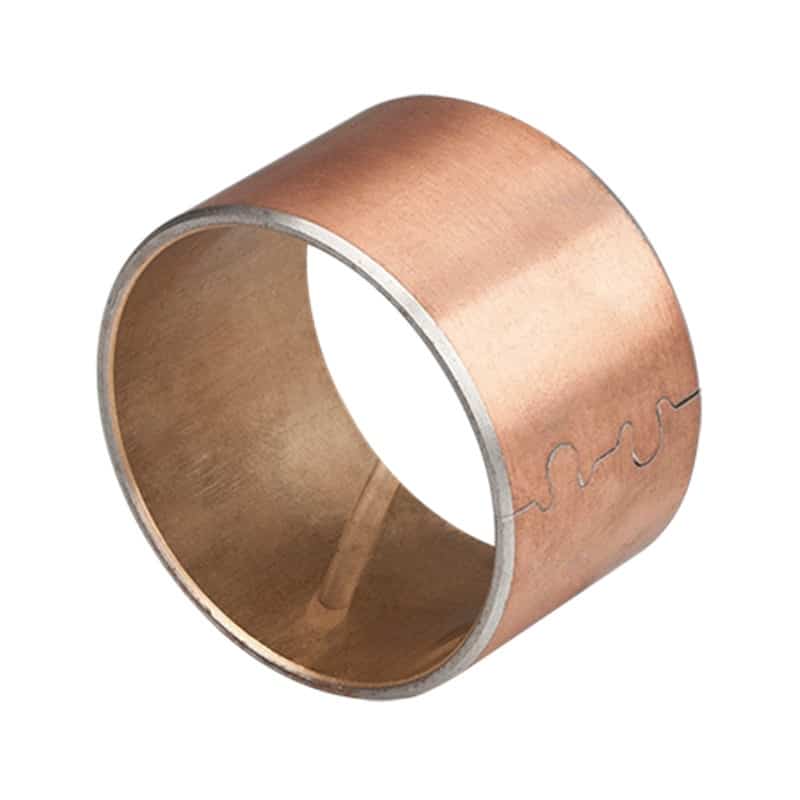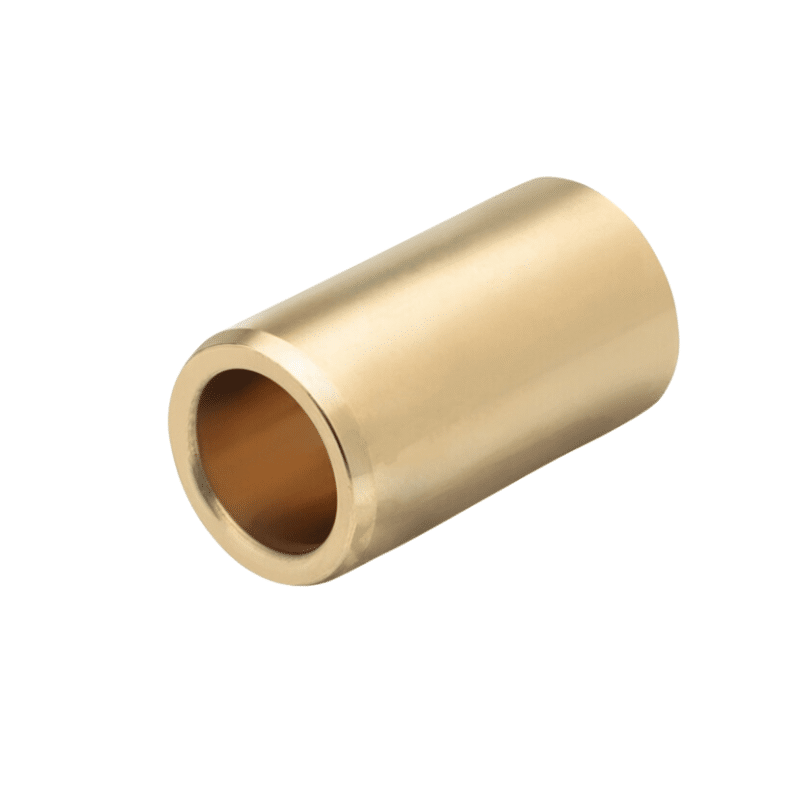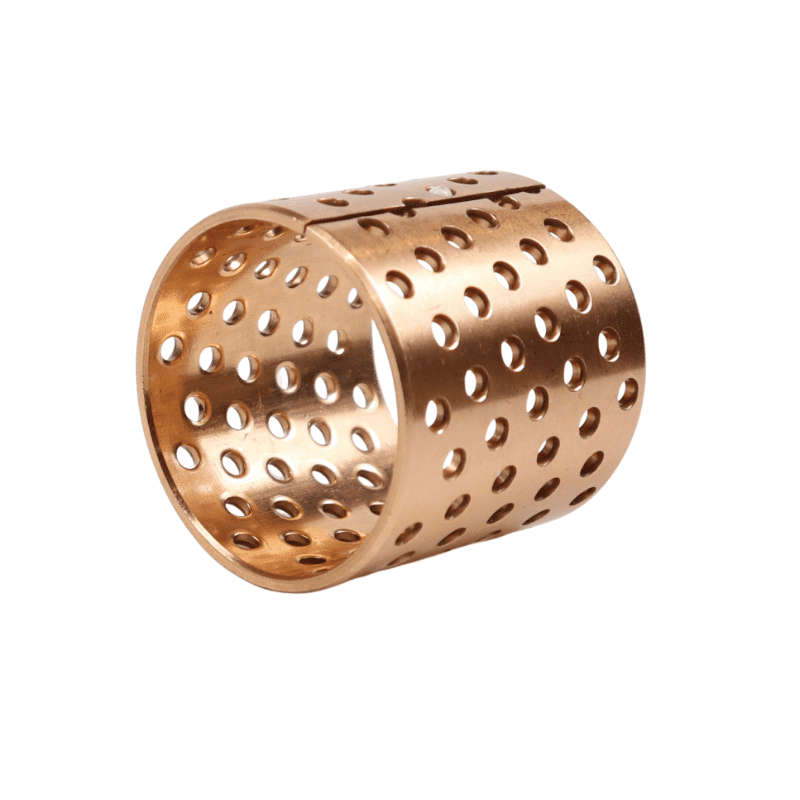Bimetal Bearing Bushes
Bimetal Bearing Bushes
Say goodbye to the hassle of frequent lubrication maintenance. Our self-lubricating technology ensures smooth operation and reduces wear and tear, extending the lifespan of your equipment. Experience uninterrupted productivity and cost savings as you bid farewell to the need for messy lubricants and time-consuming upkeep.
Manufacturing on Demand, alternative solutions
Bimetal Bearing Bushes
Bimetal-bearing bushes satisfy the various types of applications and lubrication conditions in which the bushes may be used.
Composition: Bimetal bushes consist of a steel backing for structural support and a layer of bronze or another compatible material for low-friction properties.
- used in various industries, including automotive, industrial machinery, and aerospace, where high load-bearing capacity and low friction are required.
- Benefits: Bimetal bushes offer excellent wear resistance, good load-carrying capabilities, and can operate in harsh conditions
Bimetal bearing bushes are composite bearings typically made of a steel backing and a layer of bronze or other suitable material.
JF-800 Bimetal bushes bushing
Bimetal Bearing Bushes: An In-Depth Look at JF800 Bimetal Bushing Bi-Metal Bushes
A bimetal bushing is a type of bearing component composed of two different metals, typically bronze and steel.
Applications: Bimetal bushings are suitable for heavy-duty applications where traditional bearings may fail. They are often used in environments with high loads, vibrations, and extreme temperatures
The world of mechanical engineering is characterized by an extensive array of components, each playing a vital role in the functionality of various systems and equipment. Among these integral components are bearing bushes, often referred to as bushings. Bushings are essentially mechanical components used to reduce friction between two surfaces sliding against each other. Today, we will delve into the specifics of an innovative type of bushing – the JF800 Bimetal Bushing Bi-Metal Bushes.
What is a Bimetal Bearing Bushing?
Before we delve into the specifics of the JF800 model, it’s essential to understand what a bimetal bearing bushing is. As the name suggests, these are bearings made from two different types of metal, fused together. Typically, a softer, low-friction metal like bronze or brass is used on the inside surface of the bearing, while a stronger, more robust metal such as steel is used on the outside. This unique structure provides both durability and efficiency, making bimetal bearing bushes extremely versatile in various industrial applications.
The JF800 Bimetal Bushing
The JF800 Bimetal Bushing is a high-quality bimetal bush developed to deliver excellent performance in applications with high levels of friction and load. This bimetal bush consists of a steel backing and a bronze overlay, precisely chosen to ensure optimal durability and efficiency.
The steel backing provides a high degree of load-carrying capacity and heat dissipation. It is also responsible for the bushing’s structural integrity, ensuring its longevity even in challenging operational environments. The low-carbon steel used in the JF800 series enhances the bearing’s shock resistance and ensures excellent bonding for the bronze overlay.
The bronze alloy layer, on the other hand, plays a critical role in reducing friction and wear, thanks to its superior sliding properties. The JF800 uses a particular bronze alloy, providing excellent self-lubrication, which further decreases friction and wear, ultimately enhancing the performance and life span of the bearing bush.
Key Applications and Benefits
The JF800 Bimetal Bushing is primarily designed for high-load, low-speed applications, and it performs exceptionally well under oscillating and rotational movements. Some of the key applications of this bearing bush include agricultural machinery, truck cranes, construction machinery, and off-road vehicles.
The advantages of JF800 Bimetal Bushing are manifold. Its self-lubricating property reduces the need for frequent maintenance and ensures smooth operation even in environments where regular lubrication might be challenging. This feature also contributes to increased equipment life span by minimizing wear.
The combination of low-carbon steel and bronze alloy endows these bushings with excellent corrosion resistance. They can withstand harsh environments, making them ideal for outdoor machinery and equipment.
Furthermore, the JF800 Bimetal Bushing exhibits high thermal conductivity, which means they can perform optimally even at elevated temperatures. This feature, coupled with their ability to handle high loads, makes them an excellent choice for heavy-duty industrial applications.
Conclusion
The JF800 Bimetal Bushing Bi-Metal Bushes is a testament to the advancements in bearing technology. Their clever design, using a combination of low-carbon steel and bronze alloy, ensures they provide efficient and reliable performance in a wide range of applications. Whether it’s for agricultural equipment, construction machinery, or off-road vehicles, these bimetal bushes offer excellent load-carrying capacity, superior wear resistance, and reduced maintenance needs, marking them as a standout choice in the world of sliding bearings.
The high bonding strength, load capacity and wear resistance make it withstand medium speed, medium load, and low speed, high load conditions.
The surface may be incorporated with various kinds of oil groves, oil cave, or oil indentations, which is properly designed in order to meet different necessities of various lubricating conditions. It is widely applied on various automobile engines, vehicle chassis, motorcycle clutches, rubbing plates of gear pumps, and other hoist machines.
Your expert in self-lubricating Bearing
and Bronze alloys – serving globally
Brand replacement products and functionally equivalent parts, alternative solutions
Manufactures flange bronze bearings, service & maintenance companies to meet the exacting specifications required in a wide range of industrial applications.
Machined bronze bushing that meet the exacting requirements & specifications supplied by our clients. Spherical bearings, spindles, semi-spheres and supports that we have manufactured.
You will find to follow a selection of self lubricating bronze bearing material CuSn7Zn4Pb7, CuSn12, CuAl10Fe5Ni5,
CuZn25Al5Mn4Fe3
Alternative solution,We offer an outsourced machining service for bronze bushes, manufacturing precise parts to the designs supplied to us by our clients.
Selection of other composite bushing material of self lubricating bearing that we have manufactured.
Wrapped Bronze Sleeve Bearing, Are you interested in our products?
Manufacturer of bimetal and steel bronze bushing parts according to client’s drawing.













